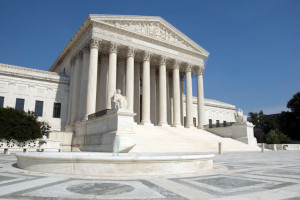17 Sep SUPREME COURT DECISION RESULTS IN 3.8% MEDICARE SURTAX FOR SOME TAXPAYERS

The recent Supreme Court decision permitting passage of the Affordable Care Act will result in 3.8% Medicare surtax beginning in January 2013 and will apply to all taxpayers whose income exceeds a threshold amount which effectively raises the marginal tax rate for some. The tax is equal to 3.8% the lesser of net investment income or the excess of modified adjusted gross income for a taxable year for individuals making over $200,000 and married couples making over $250,000. The threshold for trusts and estates is around $11,650. So, unless the act is repealed, individuals, estates and trusts should probably consider planning in year 2012 to reduce or eliminate the tax.
Net investment income includes dividends, rents, interest, capital gains, royalties and passive income activity. It does not include self-employment income, business income, gain on the sale of a partnership interest, IRA or qualified plan distributions and income on many charitable trusts. Modified adjusted gross income is the total taxable income and does not include tax-exempt income such as interest on tax-exempt bonds, veteran’s benefits, and the excluded gain on the sale of a principal residence. Required minimum distributions from a traditional IRA or 401(k) are included in modified adjusted gross income.
There will be many strategies to reduce the tax. To reduce net investment income, taxpayers could consider buying tax-exempt bonds (but you should always look at the total return), using rental real estate to create net losses, purchasing a whole life insurance policy which gives flexibility to change assets and make withdrawals in years when their income is lower, purchasing tax deferred annuities to move income into years where taxpayer’s income is lower, taking advantage of capital losses in years which there are capital gains, etc. To reduce modified adjusted gross income some might consider converting to a Roth IRA before year 2013 (but one should always calculate to see if this is best first) and the use of certain charitable trusts.
Of course, this year’s elections will probably make a difference in planning. However, a taxpayer should be prepared to act in year 2012 if they think they might possibly be adversely affected by the Affordable Care Act.










